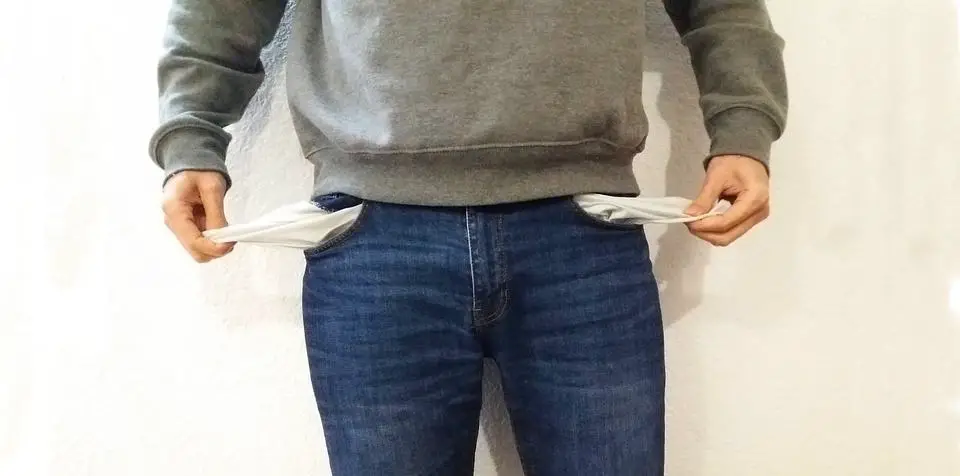College, and the astronomical costs to attend, have skyrocketed in the last few decades- and there’s no sign of stopping. Now, we’re finding that the long term effects of student loan debt are proving deleterious to not just to college graduates’ pocket books, but has far-reaching implications for our society as a whole.
Every facet of life is impacted in the long term by the loans taken out for a college education, from home ownership, to having children, establishing savings and retirement accounts, carrying long-term burden of stress, less flexibility of job choice, potential for less job opportunity, familial financial hardship, and the inability to declare bankruptcy.
To understand why the long term effects of these loans are so ubiquitous and crippling, we must first understand what student loans are, and how they function.
Two Types of Student Loans:
Read The Fine Print

In the student loan game, there are two main players:
The Federal government, and private banks.
Both entities are more than happy to dispense tens of thousands of dollars to student borrowers, regardless of income, credit, ability to pay back loans in the future, or future earning potential.
Most students are thrilled when “Approved” for student loans, taking them out with gusto.
But the devil is in the details.
Federal Loans
The federal government doles out millions of dollars in student loans annually. As college tuition skyrockets, so does the amount these institutions loans out.
But when it’s time to pay the piper, we’re hit with a sucker punch…
Federal loan proponents exalt the program as “borrower friendly”, providing various strategies for debt payment like forbearance options, deferment, and income-based repayments…
But, what they don’t clearly divulge is that regardless of what happens to the borrower- like disease or disability- students are on the hook until death or full repayment.
This is the only type of loan that cannot be discharged in bankruptcy.
If a borrower is unable to work due to serious illness or lack of work leading to Chapter 7 bankruptcy, the federal student loans will remain.
And the government uses various methods to obtain repayment under the Federal Collection Act.

Under the Federal Collection Act, the government does not require a court order nor judgement before they begin their collection process:
If a student borrower defaults on their loan, the government will send a letter to their employer (if applicable), to inform them that wages will be garnished until the loan is paid in full.
So, before a borrower gets their paycheck, the federal government will have their slice of the pie first.
For the borrower, there is no recourse.
Not only can paychecks be garnished, but tax refunds will also be seized. The same goes for retirement, social security payments, and disability checks.
If a borrower has a co-signer on the loan, that person is under the same obligation to pay and can have the same forced-payment methods levied against them.
In this game, the house always wins.
Private Loans
Private loans are those given out by a private bank. Often, these loans have a much higher interest rate, and if a borrower is late on a payment or defaults, the interest continues to rise.

If a borrower defaults, private lenders have many methods at their disposal to collect payment, including:
Wage garnishment, garnishing of bank account, lien on state tax returns, the seizure of property and possible issuance of a bench warrant and arrest (depending on the state).
Unlike a federal student loan, private lenders must abide by their state’s statute of limitations for loans.
Depending on the state, the Statute of Limitations on borrowers can range from 3 to 10 years. This means, after the requisite number of years have passed since a borrower became delinquent of payment, the private lender can no longer sue the borrower and bring them to court to force payment.
However, this does not mean the loans are discharged.
This simply means that the lending entity can no longer use the court system to obtain payment.
Borrowers will still owe the debt.
And it’s possible to “restart” the Statute of Limitations, starting the process all over again by acknowledging one owes the debt, a written submission of promise to pay, or even making a payment.
These are the many ways loans are meant to ensnare borrowers.
The Long Term Effects of Student Loan Debt
So, what are the long term effects of the student loan system? They are much more insidious and pervasive than most borrowers realize.
Home Ownership
Saddled with student debt makes it difficult to get approved for a mortgage, as one’s income to debt ratio will be heavily skewed toward debt.
Unlike student loans, home loan approval is based on a number of important financial factors, including:
- Amount of Debt Owed
- Credit Score
- Employment History
- Size of Down Payment
For most student loan borrowers, a down payment is difficult to save, the amount of debt is large (pre-mortgage), employment history is unlikely to be robust, and credit scores a likely low due to unpaid student debt.
Home ownership is delayed, on average, by seven years due to student debt; the Federal Reserve reported in 2017 that with home ownership drops 1.5% for every $1000 owed.
Less Job Flexibility
Although stable, high paying jobs post-graduation exist, for the majority of college grads, this is rarely the reality.
After graduation, most lenders give a “six-month grace period”, after which, loan repayment begins…

The average borrower will have minimum monthly payments of $400. Keeping on top of these payments and not falling into Delinquency can prove difficult.
Due to the rising cost of living in most American, urban areas, finding a job that will provide enough for rent and bills often becomes paramount, superseding the ability to find a career in one’s field of study.
Indeed, the Federal Reserve found that a mere 27% of graduates utilized their degree in the workforce, most of which are STEM (Science, Tech, Engineering, Mathematics) fields.
Co-Signer Burden
The majority of student loan co-signer are parents or other family members. Although people have a basic understanding of the responsibilities, most remain unaware of the penalties that can be levied against them in cases of non-payment.
Both the federal government and private institutions have numerous means at their disposal to collect debt from either the borrow or co-signers.
As mentioned previously, these methods can include:
- Wage Garnishment
- Tax Return Seizure
- Garnishment of Social Security and/or Disability Payments
- Seizure of Personal Property
- Issuance of Bench Warrants (depending on state)
- Arrest (depending on state)
- License Revocation (some government jobs will limit access, some states revoke credentials of lawyers)
If the loan is issued through the federal government, and the borrower defaults, then the co-signer becomes responsible for payment.There is no statute of limitations for federal loans, therefore, only full payment or death will absolve the debt.

Long-Term Stress
For loans between $20,000 and $40,000, the Department of Education reports that it takes an average of 20 years to pay off the debt in full.
So, even in the best circumstance, student loans hang like an albatross on the necks of student borrowers for two decades.
And the longer one owes on loans, the higher the possibility of unforeseen circumstances derailing payment plans along the way: Illness, disability, or long-term job loss.
This is a long time to feel the weight and pressure of debt.
Savings and Retirement
Stuck paying hundreds of dollars in student loans, in conjunction with housing costs, food, insurance, and other necessities, makes it difficult for many to save even a small saving fund.
40% of Americans cannot afford to pay for a $500 emergency, and large student loan payments makes this situation even more fiscally precarious.

Many borrowers find themselves stuck between a rock and a hard place: Pay high student loan payments and necessities, or try to put money in a savings or retirement account?
This leads to millions of borrowers lacking any semblance of a financial safety net or future retirement savings.
So, What Can Be Done?
If You Haven’t Yet Gone to School…
There’s no shame is taking time to figure out what field of study you want to pursue. Regardless if your friends are going straight to a four-year university, or family is pushing you to “just go”, this is YOUR financial future. So tread carefully.
There are strategies to save money, and avoid tens of thousands of dollars in debt.
- Research fields of study that interest you before you register for school: Degrees Required, Average Salary
- Take Time to Work, Learn Skills, Save Money
- Pay Cash
- Choose a Degree You Will Use
- Research Trade Schools: 2-year, skilled programs are a fraction of the time and cost compared to traditional 4-year degrees… and you’ll have a certificate and transferable skill
If You Have Student Debt…
Millions of people are trying to pay down their student loans, you’re not alone. To get rid of student debt, it requires planning, financial literacy, and a bit of grit. So…
- Make a Plan (Short-term and Long-term)
- Know Your Income/Expense Monthly Ratio
- Save a $1000 Emergency Fund (for starters)
- Lower Monthly Expenses
- Put Extra Savings Toward Loan Pay Off
- Keep Your Head Down, and Chin Up!
Although it may feel like you’re drowning under the weight of student debt, you CAN get out. For many of us, the road will be long: Taking years to pay off student loans. Just know that with a real plan, hard work, discipline and some serious elbow grease, you can crush your debt!

